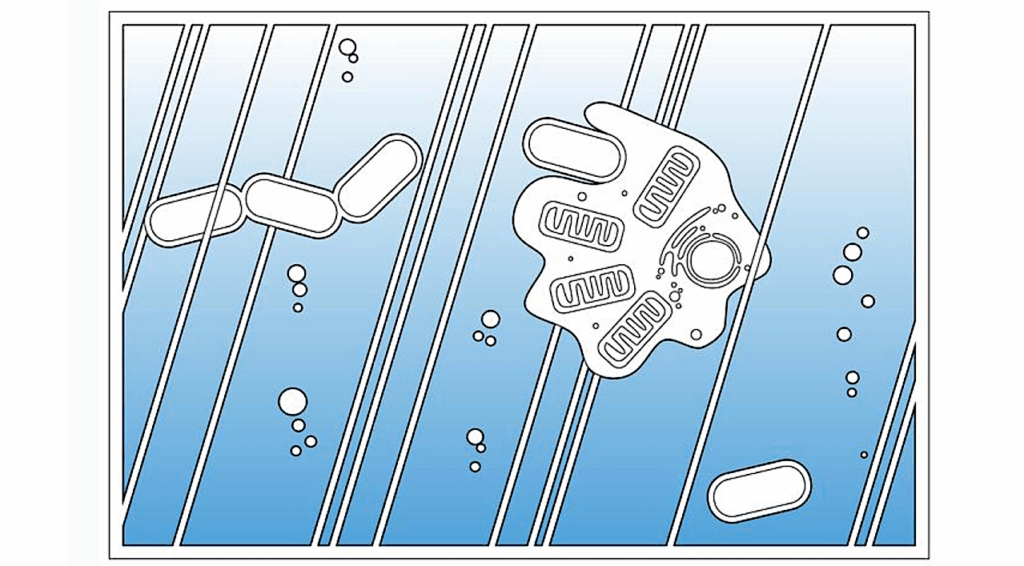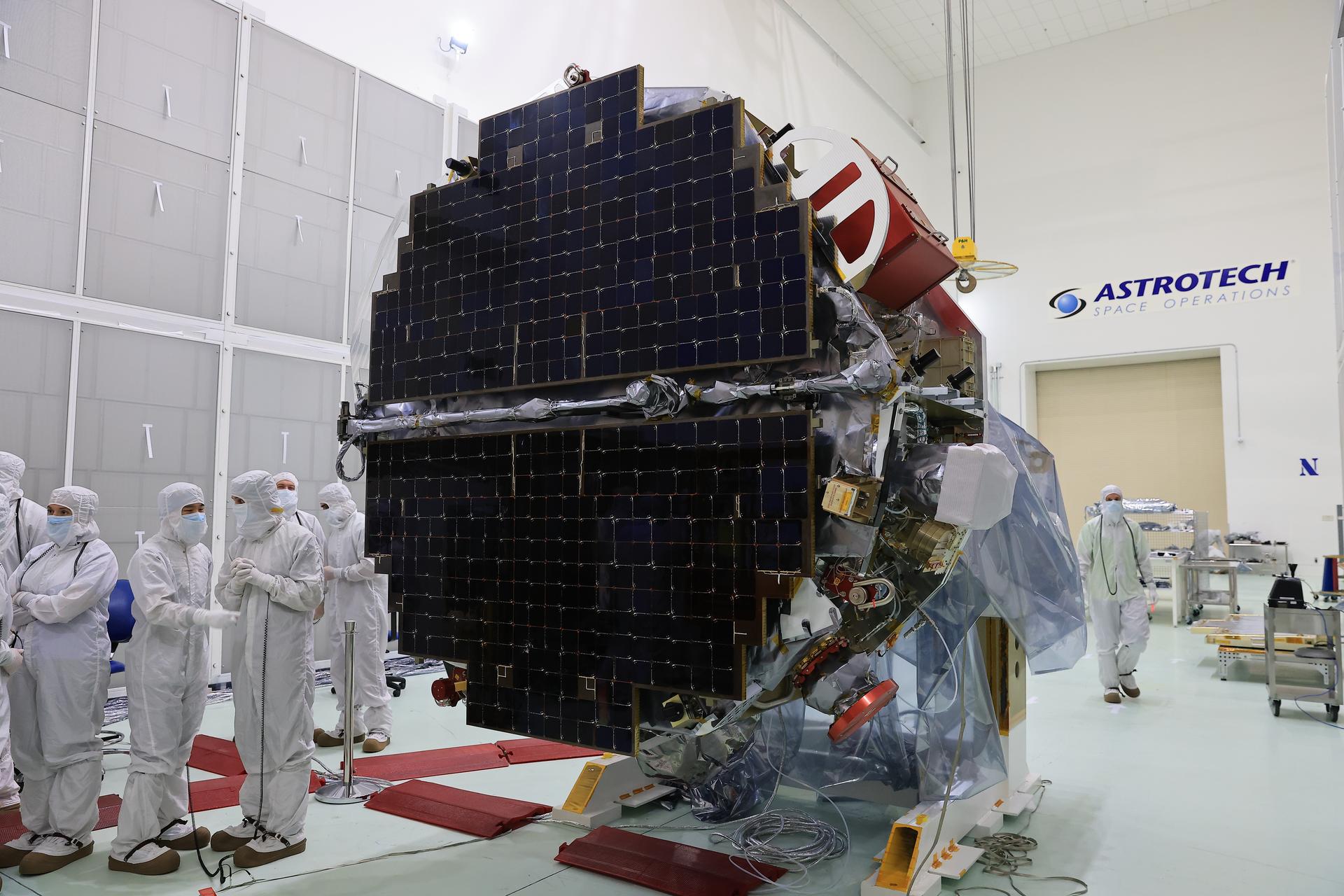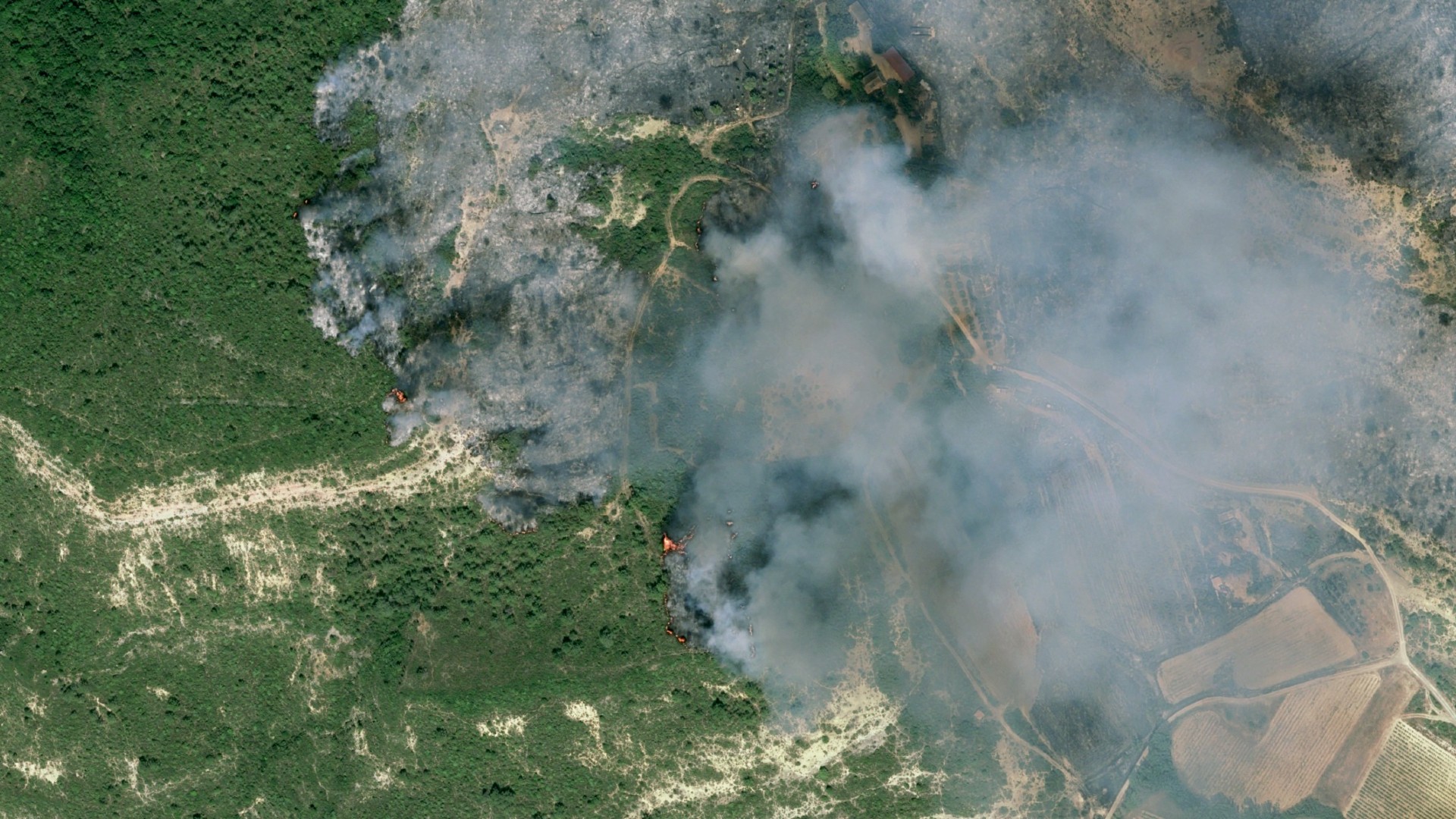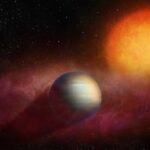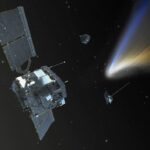Now Reading: The Possibility Of A Giant Impact On Venus
-
01
The Possibility Of A Giant Impact On Venus
The Possibility Of A Giant Impact On Venus

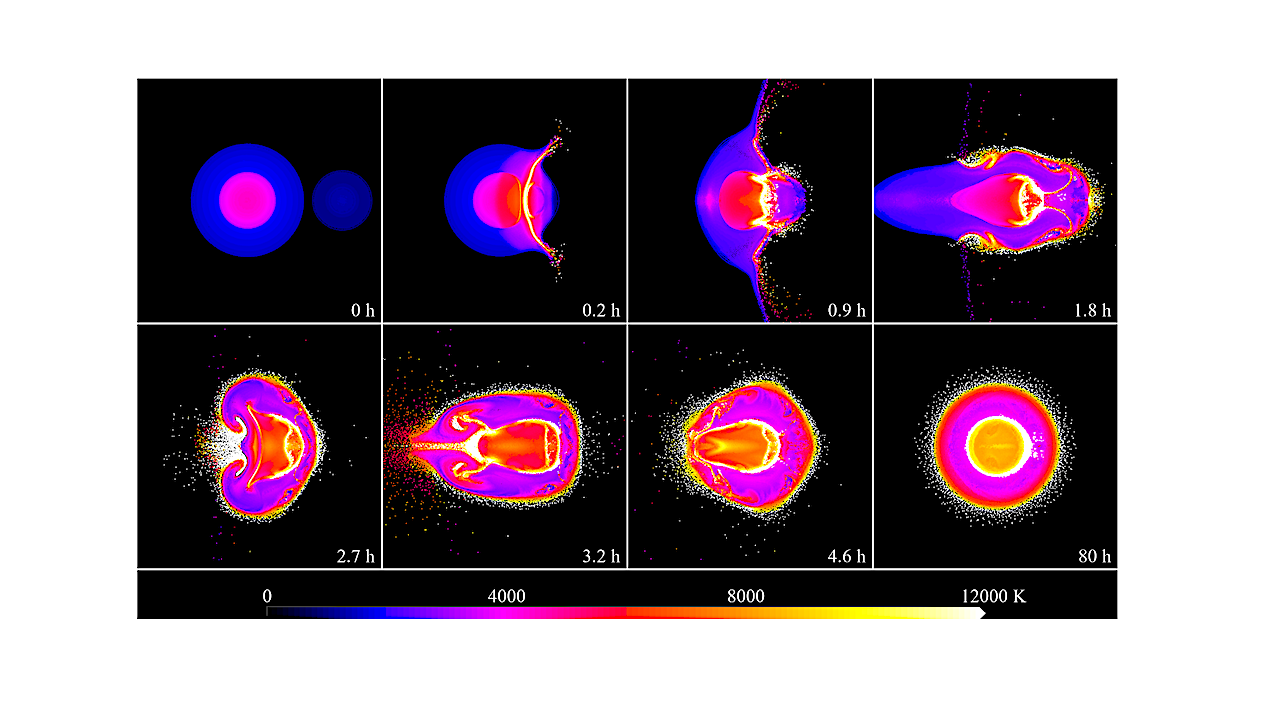
Snapshots of a cross-sectional slice of a head-on collision between a non-rotating Venus and a 0.1 M⊕ impactor at 10 km s−1 . shown at multiple time steps. Initial energy deposition at the impact site generates pressure waves that converge at the antipode, causing significant heating and deformation. The outcome of this collisions is a merger. — astro-ph.EP
Giant impacts were common in the early evolution of the Solar System, and it is possible that Venus also experienced an impact. A giant impact on Venus could have affected its rotation rate and possibly its thermal evolution.
In this work, we explore a range of possible impacts using smoothed particle hydrodynamics (SPH). We consider the final major collision, assuming that differentiation already occurred and that Venus consists of an iron core (30% of Venus’ mass) and a forsterite mantle (70% of Venus’ mass). We use differentiated impactors with masses ranging from 0.01 to 0.1 Earth masses, impact velocities between 10 and 15 km/s, various impact geometries (head-on and oblique), different primordial thermal profiles, and a range of pre-impact rotation rates of Venus.
We analyse the post-impact rotation periods and debris disc masses to identify scenarios that can reproduce Venus’ present-day characteristics. Our findings show that a wide range of impact scenarios are consistent with Venus’ current rotation. These include head-on collisions on a non-rotating Venus and oblique, hit-and-run impacts by Mars-sized bodies on a rotating Venus.
Importantly, collisions that match Venus’ present-day rotation rate typically produce minimal debris discs residing within Venus’ synchronous orbit. This suggests that the material would likely reaccrete onto the planet, preventing the formation of long-lasting satellites – consistent with Venus’ lack of a moon.
We conclude that a giant impact can be consistent with both Venus’ unusual rotation and lack of a moon, potentially setting the stage for its subsequent thermal evolution.
Mirco Bussmann, Christian Reinhardt, Cedric Gillmann, Thomas Meier, Joachim Stadel, Paul Tackley, Ravit Helled
Comments: Accepted for publication in A&A, 12 pages, 9 figures
Subjects: Earth and Planetary Astrophysics (astro-ph.EP)
Cite as: arXiv:2508.03239 [astro-ph.EP] (or arXiv:2508.03239v1 [astro-ph.EP] for this version)
https://doi.org/10.48550/arXiv.2508.03239
Focus to learn more
Submission history
From: Mirco Bussmann
[v1] Tue, 5 Aug 2025 09:12:48 UTC (5,186 KB)
https://arxiv.org/abs/2508.03239
Astrobiology,
Stay Informed With the Latest & Most Important News
Previous Post
Next Post
-
 012024 in Review: Highlights from NASA in Silicon Valley
012024 in Review: Highlights from NASA in Silicon Valley -
 02Panasonic Leica Summilux DG 15mm f/1.7 ASPH review
02Panasonic Leica Summilux DG 15mm f/1.7 ASPH review -
 03How New NASA, India Earth Satellite NISAR Will See Earth
03How New NASA, India Earth Satellite NISAR Will See Earth -
 04And Thus Begins A New Year For Life On Earth
04And Thus Begins A New Year For Life On Earth -
 05Astronomy Activation Ambassadors: A New Era
05Astronomy Activation Ambassadors: A New Era -
06SpaceX launch surge helps set new global launch record in 2024
-
 07Space Force plans new ‘Futures Command’ amid pressure to speed up modernization
07Space Force plans new ‘Futures Command’ amid pressure to speed up modernization














